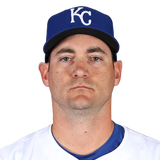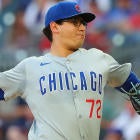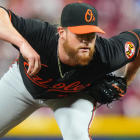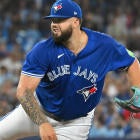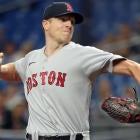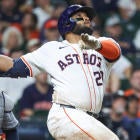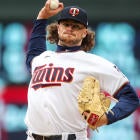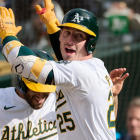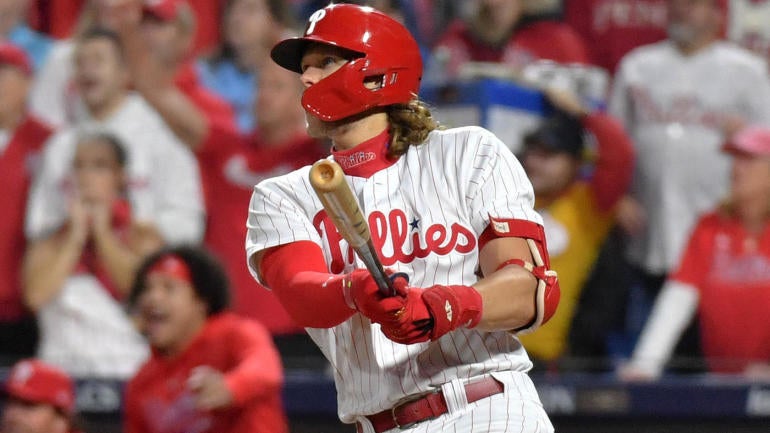
Everything regresses to the mean. It's a rule so fundamental to Fantasy Baseball (or really just baseball) that I hardly ever see fit to say it. Based on some of the feedback I've been getting, though, perhaps it needs to be said.
First let's define the terms. What I mean by "mean" is a player's normal range of outcomes -- his typical numbers, in other words. What I mean by "regresses" is "normalizes" or " returns to." I'm basically saying that players eventually get back to doing what they always do. Granted, there's no timetable for "eventually," and in rare cases, a player may even perform out of character for an entire season. But rest assured, he'll be back to normal eventually.
Now, before you protest, pointing out the many players who have genuinely gotten better or worse over the years, let me note the exceptions to this rule:
- Players who demonstrate a change in skill
- Players who demonstrate a change in approach
What do I mean by skill and approach? Well, that's where all those fancy Statcast numbers come in. They measure a player's capabilities in a way that we once had to rely on scouts to do. If you're wondering why modern baseball analysts seem to obsess over velocity and exit velocity, over launch angle and pitch selection, that's why. They're the data points that drive the actual data points, and as such, they're less likely to mislead over the long haul.
If a hitter betters his old max exit velocity by 3 mph or a pitcher is getting most of his whiffs on an entirely new pitch, well, that's a skill change that makes him essentially a new player, thus rendering his old mean moot. He may have many of his same characteristics still, but his range out of outcomes is now different.
Of course, only players who've been in the game for several years have had a chance to establish a mean. Among those players, I've identified eight who I'm confident are still who they've always been, despite what their production so far would suggest. It's not a complete list because, at this early stage of the season, a complete list would go on forever. I trust you know not to abandon hope for players like Matt Olson, Bryce Harper and Francisco Lindor, for instance. For these eight, though, you may need a reminder of who they are.
And yes, you're not going to like what I have to say for some of them. It's one of those eat-your-vegetables kind of articles.
Alec Bohm's exit velocities are the same as usual. His strikeout rate is the same as usual. He's not elevating the ball more or pulling it more in a way that would suggest he's optimized his swing for more power. He's ridiculously hot right now, having collected multiple hits in seven of his past nine games, but in the long run, I'm willing to wager that he'll deliver his usual .280-.290 batting average with about 20 homers.
| ||||||
Ranger Suarez's pitch selection hasn't changed much from a year ago, and if anything, he's throwing everything softer. His ground-ball and walk rates are both the best of his career, the latter unbelievably so -- which is to say I don't believe it. Over the previous three years, he issued 3.2 BB/9. Now, he's at 1.1, and while it's possible the reduced velocity is helping him hit his spots better, the more likely explanation is that he's just particularly sharp right now. When his walks go up, his other numbers will too, and though I don't think it's beyond his capabilities to deliver a low-threes ERA with as well as he limits hard contact, I wouldn't bet on him continuing to perform like an ace.
| ||||||
You may point to Randy Arozarena's .214 xBA and .359 xSLG as causes for concern, but he's always rated terribly by those metrics. Even if that wasn't the case, I wouldn't be so persuaded by them yet. When a player struggles, those struggles are wholesale and rarely just a product of bad luck, meaning the expected stats would suffer along with the actual ones. Arozarena is struggling, no doubt, but he's hitting the ball as hard as usual and not striking out at an absurdly high rate. Such lengthy cold stretches are hardly out of character for him either. He hit .153 with a .482 OPS last July only to rebound and hit .280 with an .860 OPS the following month. So it happens. It's just always more noticeable when it happens in April.
| ||||||
Sometimes struggles actually are a product of bad luck, though, and that appears to be the case for Brandon Nimmo, whose Statcast page is all lit up in red even though his stat line has us all seeing red. For all the high batting averages he's given us in the past, his .292 xBA is the highest it's ever been, and no hitter with at least 70 plate appearances so far has underperformed that mark by more than him. In short, I see nothing that Nimmo is doing differently than usual, and if anything, the skill indicators suggest that he should be having his best season ever. I think you have to let this one run its course.
| ||||||
Brady Singer may have only one bad start among his six so far, but he hasn't had a great one since his first two turns, when he allowed a combined one run on five hits with 14 strikeouts in 13 1/3 innings. The cracks have begun to show even if the dam hasn't totally burst yet. He's issued three walks in three consecutive outings. His swinging-strike rate is only 9.9 percent in his past five. His 4.37 xERA and 4.00 FIP are both in line with what we've seen from Singer in the past and stand in stark contrast to his 2.62 ERA. Statcast credits him with both a four-seamer and a sinker now, but he's essentially still just a fastball/slider guy, with neither pitch rating as anything particularly special.
| ||||||
Jurickson Profar's average exit velocity is up a couple miles per hour, and his xBA and xwOBA are both in the top 25 percent of the league. Is this the culmination of 11 years spent trying to live up to his former top prospect pedigree, or is he just locked in right now? After so many years of seeing him perform to a .240 batting average and .710 OPS, I'm going to bet the latter. When gauging skill changes, max exit velocity counts for a lot more than average exit velocity, particularly over a small sample, and Profar hasn't set a new standard there. He'll eventually hit a cold spell that brings his other numbers back in line as well.
| ||||||
There have been a couple ugly starts for Chris Bassitt already that might lead you to believe he's brought nothing but misery so far, but I'll have you know that his ERA stood at 3.90 before his beatdown at the hand of the Dodgers last time out. More to the point, I'll also have you know that he had a 5.18 ERA at the end of April last year and a 4.48 ERA as late as mid-June two years ago. He may take a winding path to his final numbers, but his final numbers are as bankable as they come. And seeing as he's not suffering from any loss of velocity, I'd say it's much more likely that he's enduring his usual ups and downs than that he's suddenly lost it at age 35.
| ||||||
You could argue Seth Lugo is doing something to render the old mean moot in that he's now working with an eight-pitch arsenal, fading his fastball for a wider variety of breaking balls and offspeed stuff. But seeing as it's taken his K/9 rate from 8.6 to 5.4, I'm not sure it's actually to his benefit. The ERA estimators -- namely, his 4.52 xERA and 4.47 xFIP -- would suggest he's vastly overperforming as well, and it may have to do with the fact he's faced the White Sox lineup twice and the Tigers lineup once. I'm not ready to say Lugo is as bad as his underlying numbers, but he's certainly not as good as his overlying ones and will most likely regress to being the mid-threes-ERA pitcher he's been the past three years (albeit in a variety of roles).
|




















